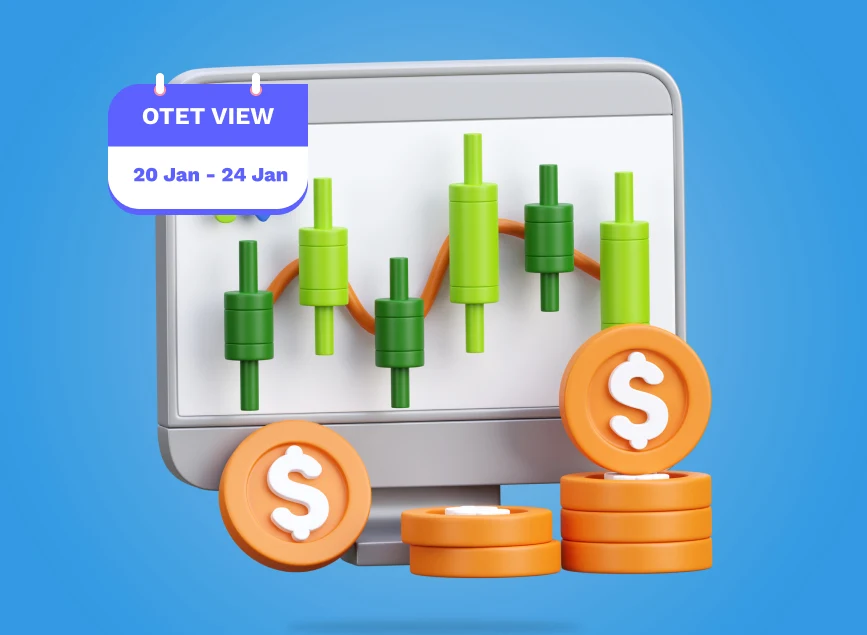
Understanding Financial Market Psychology: Key Insights for Smarter Investing
The financial markets are often driven by numbers, data, and economic fundamentals, but there’s another powerful force that heavily influences market behavior—financial market psychology. The emotions, biases, and behavioral tendencies of investors play a significant role in market trends and price movements. Understanding these psychological forces can help investors avoid common pitfalls and make more informed decisions. In this post, we will dive deeper into how market psychology influences the financial markets, using detailed examples to illustrate these effects.
What is Financial Market Psychology?
At its core, financial market psychology refers to how the collective emotions and behaviors of investors affect market outcomes. Emotions like fear, greed, panic, and euphoria can lead to irrational decision-making, driving prices up or down in ways that don’t always reflect an asset’s true value. These emotional swings can create bubbles, crashes, and sudden market volatility.

Key Psychological Biases in Financial Markets
1. Herd Mentality
One of the most common biases seen in financial markets is herd mentality, where investors follow the actions of the majority rather than relying on their own analysis. A classic example of herd mentality was the Dot-com Bubble in the late 1990s. As internet-based companies surged in popularity, investors began to blindly invest in technology stocks, believing they could only go higher. Stock prices of companies with little to no profit skyrocketed because “everyone else was buying.” When reality caught up and companies began to fail, the bubble burst, and investors lost billions.
Another recent example is the GameStop short squeeze in early 2021. A group of retail investors on Reddit banded together to buy GameStop shares, causing the stock price to surge despite the company’s weak fundamentals. This mass buying frenzy led to extreme volatility, and many who joined the trend too late suffered significant losses when the price plummeted.
2. Fear and Panic
Fear can drive investors to make impulsive decisions, particularly in times of economic uncertainty or market downturns. A notable example of fear-driven selling was during the 2008 Global Financial Crisis. As news of bank failures and collapsing financial institutions spread, panic swept through the markets. Investors rushed to sell their stocks, leading to a sharp drop in major indices like the S&P 500 and the Dow Jones Industrial Average. Those who sold during the peak of the crisis locked in massive losses, while those who remained patient eventually saw the market recover.
A smaller-scale but similar example occurred during the COVID-19 market crash in March 2020. As the pandemic spread globally and lockdowns were announced, markets saw a massive sell-off driven by fear of economic collapse. The S&P 500 fell by over 30% in a matter of weeks. However, as governments implemented stimulus measures and vaccine developments progressed, markets rebounded strongly, leaving panic sellers behind.

3. Greed and Euphoria
Greed, the counterpart to fear, often drives prices beyond rational levels. In a bull market, investors may become overly optimistic, believing that prices will keep rising indefinitely. The housing bubble of the mid-2000s is a prime example of greed leading to a speculative frenzy. Real estate prices soared, and many individuals, fueled by easy credit and the belief that home prices would continue to appreciate, bought houses far beyond their means. When the bubble burst, it triggered the 2008 financial crisis.
Another example of greed-fueled market behavior was the Bitcoin bubble of 2017. As Bitcoin’s price surged, many investors bought in not because they understood the technology or fundamentals but because they didn’t want to miss out on quick profits. Bitcoin reached an all-time high of nearly $20,000 before crashing down to around $3,000, burning many investors who had jumped in at the peak.
4. Loss Aversion
Loss aversion refers to the tendency of investors to prefer avoiding losses over acquiring equivalent gains. This bias often leads people to hold onto losing investments longer than they should, hoping that the asset will bounce back. A classic example of loss aversion can be seen in the behavior of investors during the dot-com crash of 2000. Many people who had invested heavily in tech stocks watched their portfolios shrink drastically but refused to sell, holding onto their positions in the hope that prices would recover. Unfortunately, many of these stocks never did, leading to significant long-term losses.
Another example is the oil market collapse in 2014. As crude oil prices dropped from over $100 per barrel to under $30, many investors held onto oil-related stocks, believing the downturn was temporary. Some of these companies never recovered, and those who didn’t sell early on suffered greater losses than if they had cut their losses sooner.
5. Overconfidence Bias
Overconfidence bias is when investors believe they have superior knowledge or expertise, leading them to take excessive risks. This can result in overtrading, poor diversification, or holding concentrated positions in high-risk assets. A notable example occurred during the cryptocurrency boom of 2017. Many retail investors were overconfident in their ability to time the market, buying into various cryptocurrencies without understanding the underlying technology or risks. When the market crashed, many lost large amounts of money, as they had invested heavily based on misplaced confidence.
Overconfidence also played a role in the 2008 housing crisis, where many homeowners and investors believed that home prices would continue to rise indefinitely. People took out risky mortgages, confident that they could either refinance or sell at a higher price. When the market turned, it exposed the fragility of these overleveraged positions.

The Role of Market Sentiment: Real-World Example
Market sentiment—the overall attitude of investors toward a particular market—can cause significant swings in asset prices, even when fundamentals remain unchanged. Tesla, for example, is a company that has experienced wild swings due to shifts in sentiment. During certain periods, positive sentiment about Elon Musk’s leadership and the future of electric vehicles drove Tesla’s stock price far beyond what traditional valuation metrics might suggest. On the flip side, when sentiment turned negative due to concerns about production issues or regulatory challenges, the stock experienced sharp declines.
Market sentiment is also visible in commodity markets. Consider gold: during periods of economic uncertainty, investors flock to gold as a “safe-haven” asset, causing prices to spike. This happened during the COVID-19 pandemic when concerns about inflation and economic instability pushed gold prices to all-time highs.
Behavioral Finance and Its Importance
Behavioral finance studies how psychological factors influence financial decisions. It helps explain why investors sometimes act irrationally and make poor choices despite access to ample information. The field highlights how biases, emotions, and heuristics (mental shortcuts) can lead to errors in judgment.
For example, anchoring is a behavioral bias where people fixate on an initial piece of information when making decisions. In investing, this might mean that an investor is overly influenced by a stock’s previous high price, causing them to believe it will eventually return to that level even if the fundamentals no longer support such a valuation.
Another key concept in behavioral finance is the endowment effect, where individuals overvalue an asset simply because they own it. This can result in holding onto an underperforming stock for too long because the investor is emotionally attached to it.
Managing Emotions in Investing: Practical Tips
It’s impossible to completely remove emotions from investing, but understanding the psychological pitfalls can help investors make better decisions. Here are some strategies to manage emotions effectively:
1. Have a Plan and Stick to It Before investing, it’s crucial to establish clear goals and a well-defined strategy. Whether it’s long-term wealth accumulation or short-term gains, having a plan in place reduces the likelihood of impulsive decisions driven by market fluctuations. For example, using dollar-cost averaging—where you invest a fixed amount at regular intervals—can help you avoid the temptation to buy or sell based on short-term price movements.
2. Diversification Diversifying your portfolio across different asset classes, sectors, and regions can reduce the emotional impact of market volatility. For instance, if you have a well-diversified portfolio, a sudden drop in tech stocks might be offset by gains in other sectors like healthcare or utilities.
3. Avoid Overtrading Overtrading is often a symptom of overconfidence or fear of missing out (FOMO). Studies have shown that frequent trading tends to lead to worse performance, as transaction costs add up and emotional decisions cloud judgment. Instead, focus on making thoughtful, informed trades rather than reacting to every market fluctuation.
4. Use Stop-Loss Orders To protect against emotional decision-making, some investors use stop-loss orders. These orders automatically sell a stock when it reaches a certain price, limiting potential losses. For example, if you buy a stock at $50 and set a stop-loss order at $45, the stock will be sold automatically if the price drops to that level, protecting you from further losses.
5. Seek Professional Guidance If emotions are getting the best of you, it may be helpful to work with a financial advisor. Advisors can provide an objective perspective, helping you stay focused on your long-term goals rather than reacting emotionally to market swings.

Conclusion: The Power of Financial Market Psychology
Financial market psychology is an essential aspect of investing that should not be overlooked. Emotions like fear, greed, and overconfidence often lead to irrational behavior, influencing market trends and driving price movements that don’t align with the underlying fundamentals. By understanding key psychological biases—such as herd mentality, loss aversion, and overconfidence—investors can make more rational decisions and avoid common traps.
A disciplined approach, grounded in knowledge of behavioral finance and market psychology, can help investors stay focused on their long-term goals. Whether you are a seasoned trader or a novice investor, being mindful of emotional influences will improve your ability to navigate the unpredictable nature of financial markets.
Share
Hot topics

Federal Reserve’s Challenges to Trump’s New Policies
As the Federal Reserve Open Market Committee (FOMC) prepares for its upcoming meeting, all eyes are on how the Fed will respond to Donald Trump’s latest economic policies. With the...
Read more




Submit comment
Your email address will not be published. Required fields are marked *